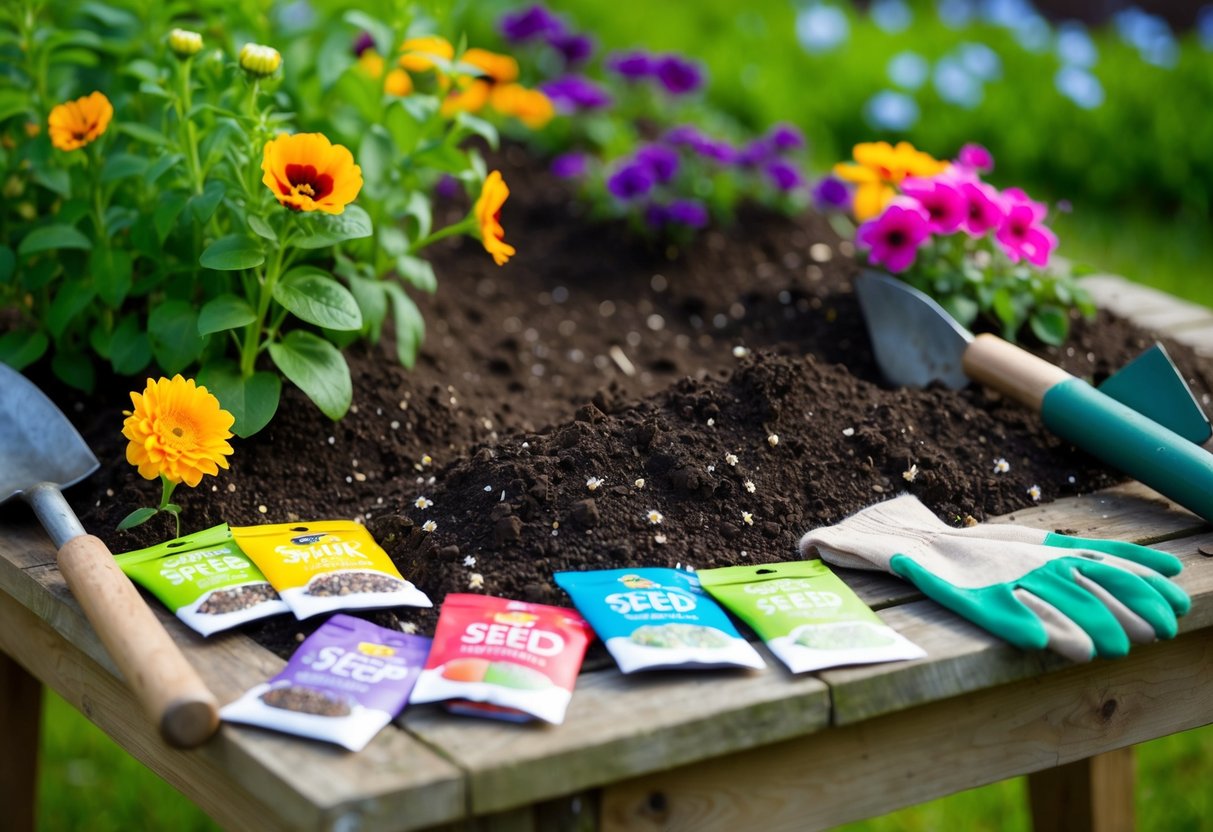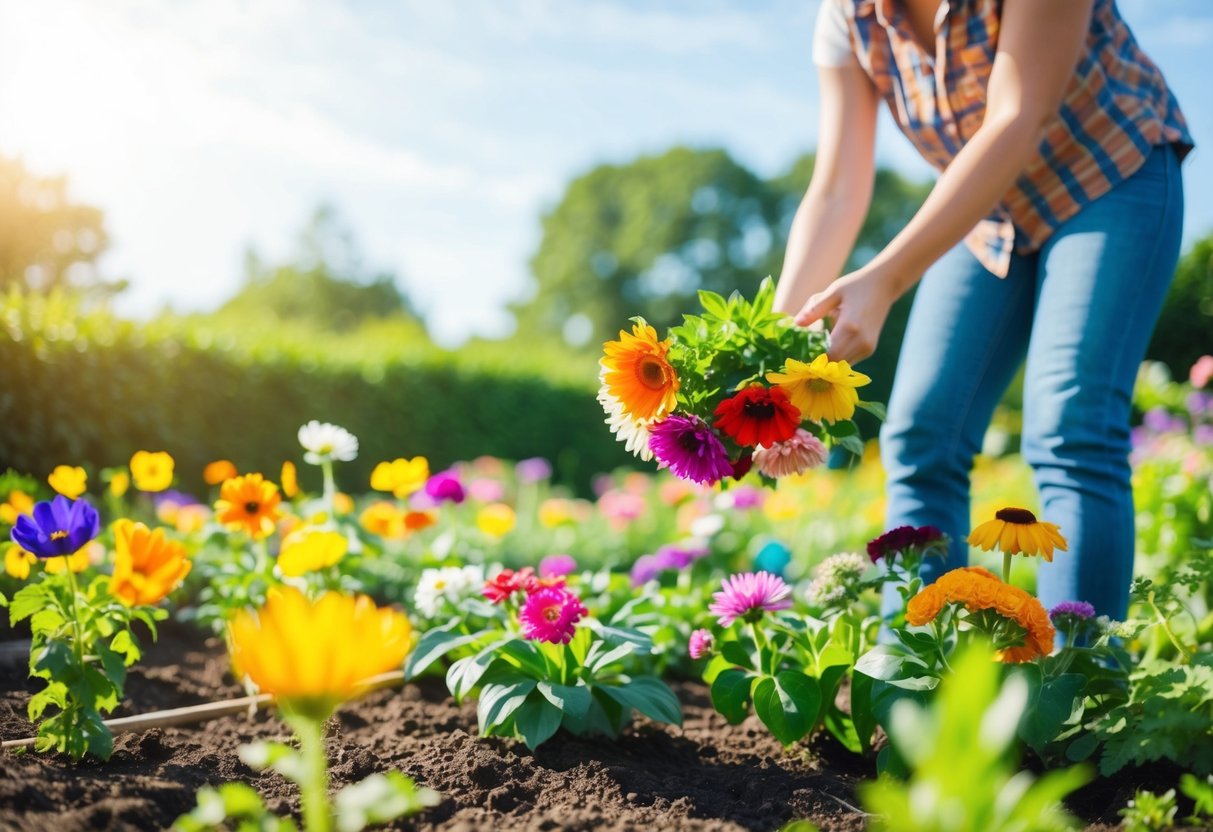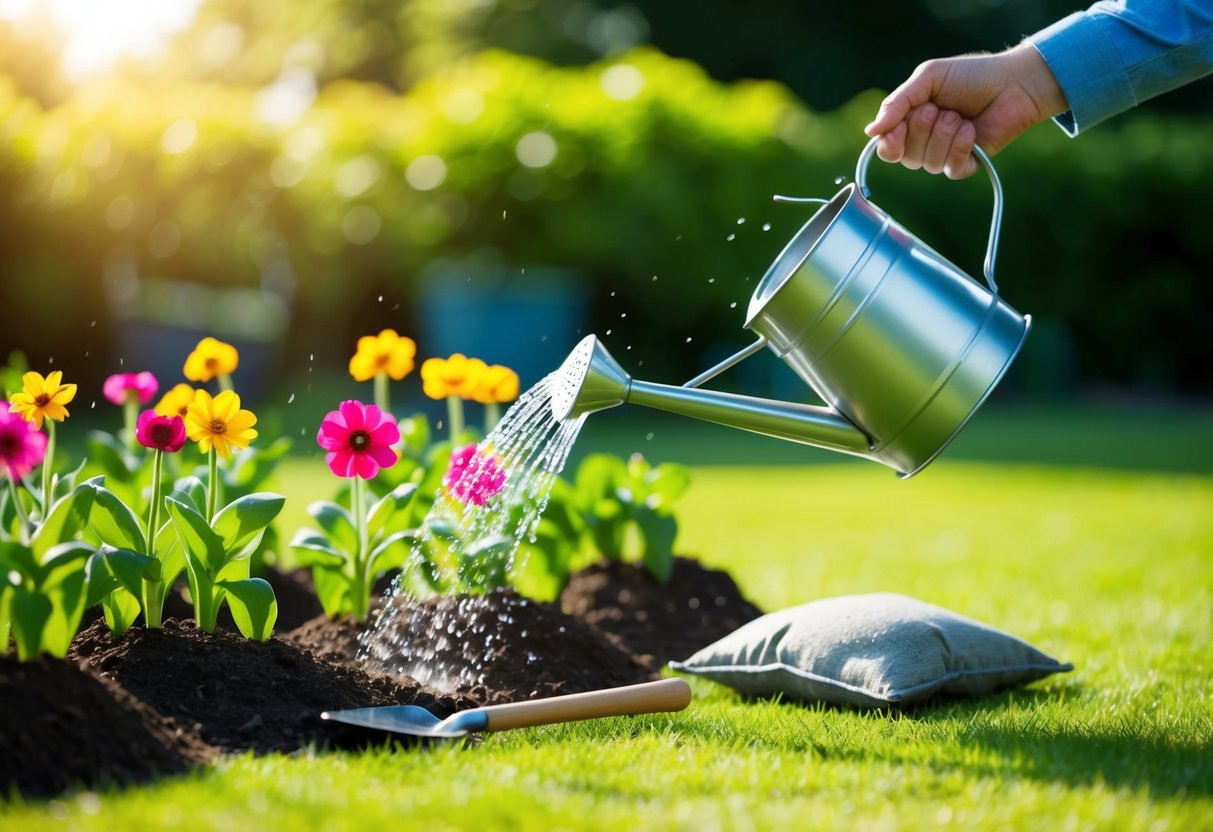Is It Too Early to Plant Flowers in the Garden? Tips for Every Season
Trying to decide if it’s too early to plant flowers in your garden? It’s crucial to consider the climate and weather patterns in your area. If you’re still experiencing frosts, it might be best to hold off on planting some types of flowers. In places where the chance of frost has passed, you can start planning and planting your garden.

You also need to think about the types of flowers you want to grow. Some, like annuals, need warmer soil to thrive, while frost-tolerant perennials can handle cooler temperatures. Understanding the needs of each plant type will help you make the best decision.
Checking local gardening calendars or online resources can give you a clearer idea of your area’s planting schedule. By taking the time to plan, you’ll set your garden up for a beautiful growing season.
Understanding Frost Dates

Knowing the right time to plant flowers in your garden depends largely on frost dates. These dates help you figure out when it is safe to plant without risking damage to your flowers. Understanding when frost occurs helps you make better decisions for planting and growing seasons.
Last Frost Date and Its Importance
The last frost date marks the end of frost conditions in spring. This date is crucial for gardeners because it tells you when it’s generally safe to begin planting. Frost can damage or kill young plants and flowers that are not frost-tolerant. The timing of the last frost date varies depending on your location, and it’s often necessary to consider local climate conditions. Different regions fall into various USDA hardiness zones, which give a clearer picture of when to expect the final frost each year. Paying attention to these zones helps you plan your gardening activities more precisely. For example, a garden in Zone 8a sees its last light freeze in early spring when temperatures rise above 32°F.
Spring Frost Date for Gardeners
A spring frost date tells you when frost is likely to happen, impacting the start of your planting season. In early spring, temperatures can still drop to freezing levels, affecting young plants that are not frost-resistant. Some flowers, like daisies and delphiniums, can be started indoors before moving them outside when it’s safe. Understanding your local climate and pairing that with frost date information lets you choose the right time to plant different flowers, ensuring they thrive. Tools like the spring frost garden zone map also offer regional insights that help guide your planting decisions. By consulting these resources, you can better protect your plants against unexpected cold snaps.
Preparing Your Garden for Planting

Getting your garden ready for planting involves checking the soil temperature and choosing flowers that fit your climate. Making sure the soil is prepared and selecting the right types of flowers are key to a blooming garden.
Soil Temperature and Preparation
Before planting, it’s crucial to monitor soil temperature. Most flowers thrive when soil is warm enough, usually between 50°F to 60°F. Using a soil thermometer can help you get an accurate reading.
Preparing the soil involves more than just knowing the temperature. You’ll want to test for nutrients and pH levels, which ideally range from 6.0 to 7.0. This helps create the best soil conditions for your plants. You can purchase a soil testing kit from a garden center for this task.
Once tested, add organic matter or compost to improve soil fertility. Make sure the soil is well-draining to avoid waterlogging your plants. Work the soil with a spade or fork, breaking up large lumps to improve oxygen flow.
Choosing the Right Flowers for Your Climate
Selecting flowers that suit your climate is crucial for success. In colder regions, opt for frost-tolerant varieties to ensure growth amid varying temperatures. Take note of the frost dates for your area before deciding what to plant.
If you’re in a warmer zone, you have more flexibility. Consider planting vibrant annuals or robust perennials suited for heat. Check for local gardening recommendations to find flowers that will thrive in your soil conditions and climate.
Choosing native plants can be particularly beneficial as they are already adapted to local weather patterns. Always read the planting guide for each flower type to ensure you provide the best environment for growth.
Selecting Flowers to Plant

When you’re planning your garden, you’ll need to decide between annuals and perennials. You might also consider starting with spring-flowering bulbs and cool-season flowers, which can bring color to your garden even in cooler months.
Annuals and Perennials: Pros and Cons
Annuals like pansies and violas bring vibrant colors to your garden for a season. They’re perfect if you love to change your garden’s look each year. On the downside, you’ll need to plant them every spring.
Perennials, such as hydrangeas and flowering quince, return yearly, making them a long-term investment. Though they might take a bit of time to establish, their consistent bloom means less annual replanting. Frost-tolerant perennials can brave cooler weather. Remember that some require more upkeep than others, so check their needs before planting.
Starting with Spring-Flowering Bulbs
Spring-flowering bulbs like tulips, daffodils, and crocus can bring early color to your garden. These bulbs are usually planted in the fall before the ground freezes.
Snowdrops are another choice for a touch of white at the end of winter. Plant bulbs at the correct depth to ensure they grow strong. For smaller bulbs like crocuses, two inches deep will do. Larger bulbs, such as tulips, need to be planted six to eight inches deep for healthy growth. A good mix of bulbs ensures staggered blooms in early spring.
Cool-Season Flowers to Begin With
Cool-season flowers are ideal for starting your garden early in the year. Pansies and violas can withstand cooler temperatures and can be planted as soon as the ground is workable.
They offer bright colors even when the weather is chilly. Waiting until the risk of frost has passed is smart for your more sensitive flowers, but these are quite hardy. Including these in your garden plan helps extend your flowering season, so you can enjoy a beautiful display as other plants begin to bloom. Their resilience makes them an excellent choice for an early start.
Planting Flowers at the Right Time

Timing is key when planting flowers. Knowing when to plant specific types can affect how well they grow and how much they bloom. Careful timing can also help reduce transplant shock and ensure healthy root development.
The Best Time to Plant Different Flowers
Choosing the best time to plant is important for a vibrant garden. Perennials, like daisies and dianthus, generally start indoors 10 to 12 weeks before the last frost. Ideally, you transplant them one to two weeks before this date. Annuals like zinnias can be directly seeded after the last frost for a colorful, continuous display throughout the season.
Bulbs have specific needs. Plant spring-blooming bulbs in the fall when soil temperatures cool, allowing roots to establish over the winter. On the other hand, summer-blooming bulbs should be planted in early spring as they require warmer soil for germination and root development. Use a planting calendar to fine-tune your schedule based on your region’s weather patterns. Check out this planting guide for detailed advice on timing for various flowers.
Minimizing Transplant Shock
Transplant shock can reduce growth and delay blooms. To prevent this, transplant on a cloudy day or in the late afternoon to minimize sun stress. Before moving your plants, you should water them thoroughly to maintain moisture in the soil. This helps protect the roots and increases the chance of successful adaptation in a new location.
Avoid disrupting the roots when moving your plants. Gently tease them apart without causing damage. Using a consistent watering schedule helps the roots settle and grow strongly. Applying a thin layer of mulch can retain moisture and protect against temperature fluctuations, aiding early spring planting success.
Preparing a balanced soil mix rich in nutrients gives your flowers the best start. By planning carefully and taking extra steps, your garden will thrive with vibrant blooms, keeping your rock garden or flower bed lush and colorful.
Ongoing Care for Newly Planted Flowers

Taking good care of your newly planted flowers is important to help them grow strong and healthy. You need to protect them from frost and pests while providing the right nourishment for vibrant blooms and growth.
Protecting Against Frost and Pests
Frost can harm young plants, causing frost damage. Keep an eye on weather forecasts for unexpected cold spells. If frost is expected, cover your delicate flowers like roses and zinnias with a cloth or blanket at night. For small plants, an upside-down bucket can work too.
Pests such as aphids and slugs may target your plants. Regularly check your garden for any signs of pests and diseases. Use natural remedies like neem oil or introduce beneficial insects such as ladybugs to combat pest problems. It ensures that your vegetables and flowers, like sunflowers and muscari, thrive without being eaten.
Nurturing Bloom and Growth
Watering is key. Make sure your new plants get enough moisture, especially during dry spells. A good rule is to water them thoroughly about once a week more if it’s hot. Soil should be moist but not soggy.
Flowers like summer flowering bulbs and spring flowering bulbs need the right nutrients. Use a balanced fertilizer every few weeks. This boosts their blooming potential, giving you beautiful and healthy plants. Deadheading, or removing spent flowers, encourages more blooms. Enjoy each stage of growth while you nurture your blossoming garden.







